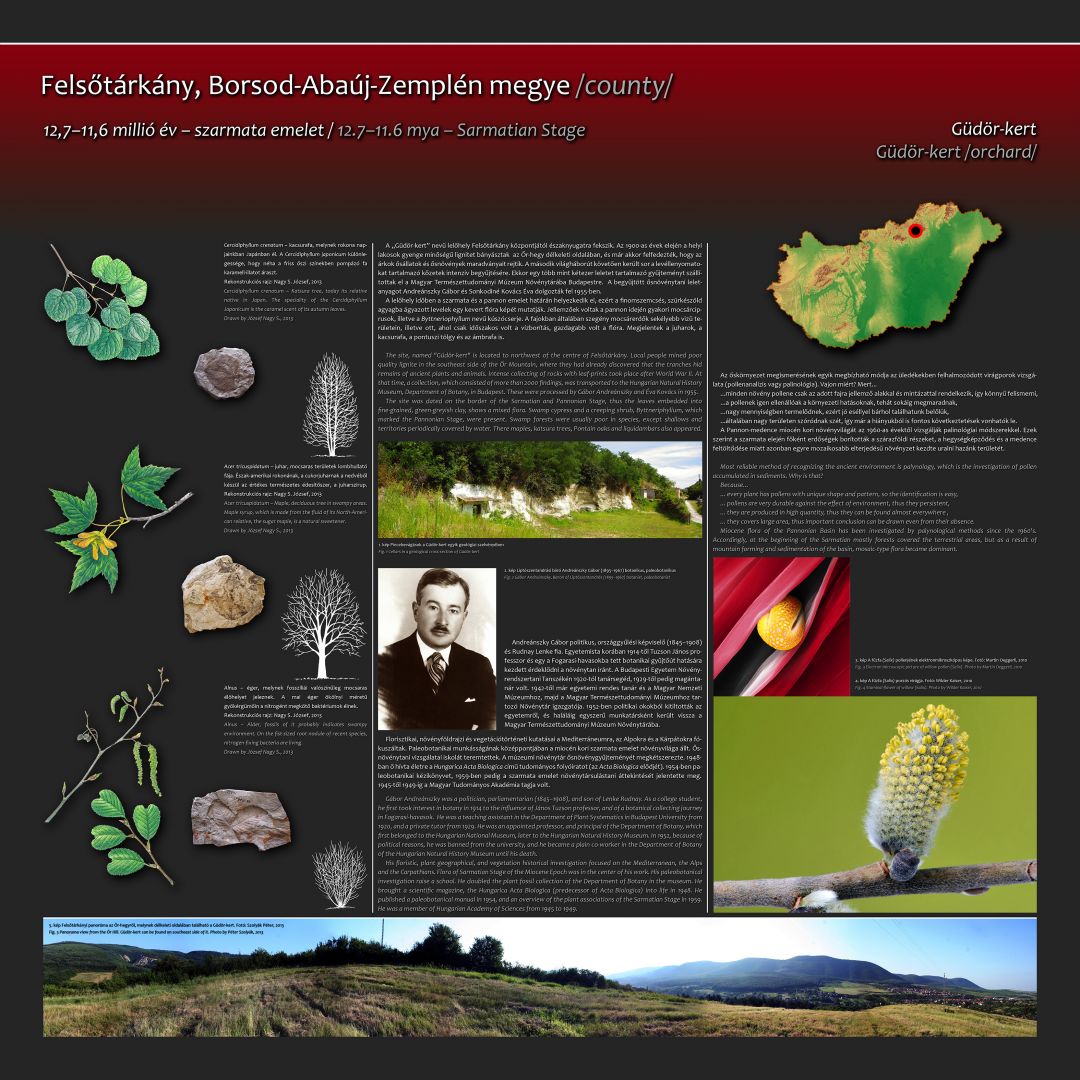MIOCENE FAUNA - 2. view
Felsőtárkány, Borsod-Abaúj-Zemplén megye /county/
12.7–11.6 mya – Sarmatian Stage
The site, named "Güdör-kert" is located to northwest of the centre of Felsőtárkány. Local people mined poor quality lignite in the southeast side of the Őr Mountain, where they had already discovered that the tranches hid remains of ancient plants and animals. Intense collecting of rocks with leaf-prints took place after World War II. At that time, a collection, which consisted of more than 2000 findings, was transported to the Hungarian Natural History Museum, Department of Botany, in Budapest. These were processed by Gábor Andreánszky and Éva Kovács in 1955.
The site was dated on the border of the Sarmatian and Pannonian Stage, thus the leaves embedded into fine-grained, green-greyish clay, shows a mixed flora. Swamp cypress and a creeping shrub, Byttneriphyllum, which marked the Pannonian Stage, were present. Swamp forests were usually poor in species, except shallows and territories periodically covered by water. There maples, katsura trees, Pontain oaks and liquidambars also appeared.
